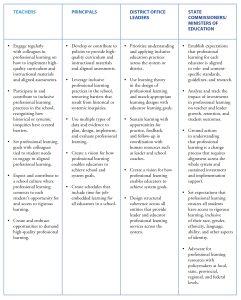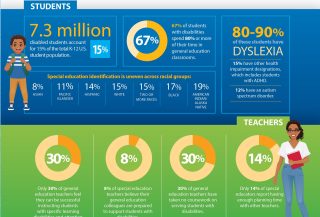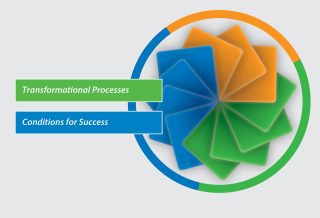STANDARDS IN PRACTICE
Why these standards matter for you (yes, you)
By Paul Fleming
Categories: Fundamentals, Implementation, Standards for Professional LearningJune 2022
“How can Standards for Professional Learning help me and my schools?”
I remember being asked this question by a principal supervisor in 2014 when, as assistant commissioner at the Tennessee Department of Education, I was rolling out guidance and professional learning for administrators on the standards. Fast-forward to 2022, and this question remains pertinent as Learning Forward releases revised standards.

The short answer is that Standards for Professional Learning set the bar for high-quality professional learning by defining the rigorous content, transformational processes, and conditions for success so that each educator experiences high-quality professional learning and each student engages in high-quality learning.
The central equity issue confronting public education right now is the need for a diverse, well-trained, and stable teacher and leader workforce equitably distributed across all states, communities, districts, and schools. A high-quality professional learning system aligned to Standards for Professional Learning can accelerate policies and practices for solving these equity challenges.
The challenges of the past 2½ years during COVID-19 have heightened the urgency for such a system. Educators at all levels are working harder than ever to meet the needs of their students despite sometimes daunting and ever-changing conditions.
In my conversations with school, district, and state leaders across the country, I see and hear that they understand the importance of equipping themselves and their colleagues with the knowledge, skills, and behaviors necessary to accelerate student growth and reduce the opportunity gaps that can derail their most underserved students at this critical time. They also understand they cannot do this work alone or in silos.
Many educators express to me this common and recurring hope: To be part of a collaborative and supportive system in which everyone is rowing in the same direction toward common goals undergirded by equitable and evidence-based policies, programs, and practices that accelerate excellent teaching and student outcomes.
Standards for Professional Learning, and the tools that accompany them, provide direction and guidance to steer the boat in that direction. They detail key roles and responsibilities for educators at all levels to help ensure that the standards are applied in a systemic way.
In the table below lists specific examples of how stakeholders at multiple levels can apply the newly revised standards to improve professional learning.
For a larger image of this table, download the pdf of this article.

Download pdf here.

Paul Fleming serves as chief learning officer at Learning Forward. His current areas of focus include leading the effective implementation of the Standards for Professional Learning and corresponding tools, the expansion of our professional services and leadership and learning series teams, and multiple consulting projects with states and districts to increase educator and leader effectiveness through student-focused, high quality professional learning.
Categories: Fundamentals, Implementation, Standards for Professional Learning
Recent Issues
LEARNING DESIGNS
February 2025
How we learn influences what we learn. This issue shares essential...
BUILDING BRIDGES
December 2024
Students benefit when educators bridge the continuum of professional...
CURRICULUM-BASED PROFESSIONAL LEARNING
October 2024
High-quality curriculum requires skilled educators to put it into...
LEARNING TO PIVOT
August 2024
Sometimes new information and situations call for major change. This issue...












